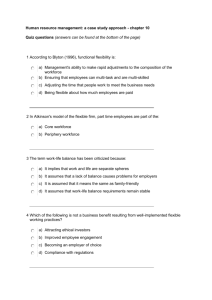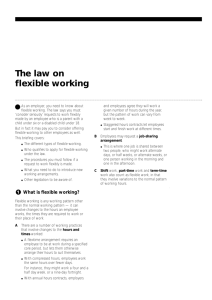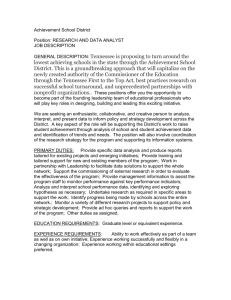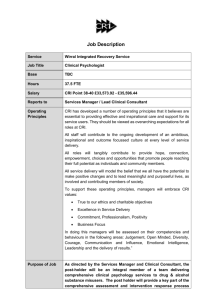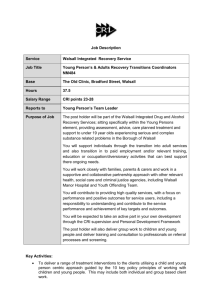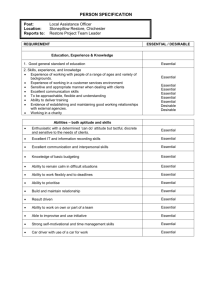Thinking Flexibly Lesson
advertisement
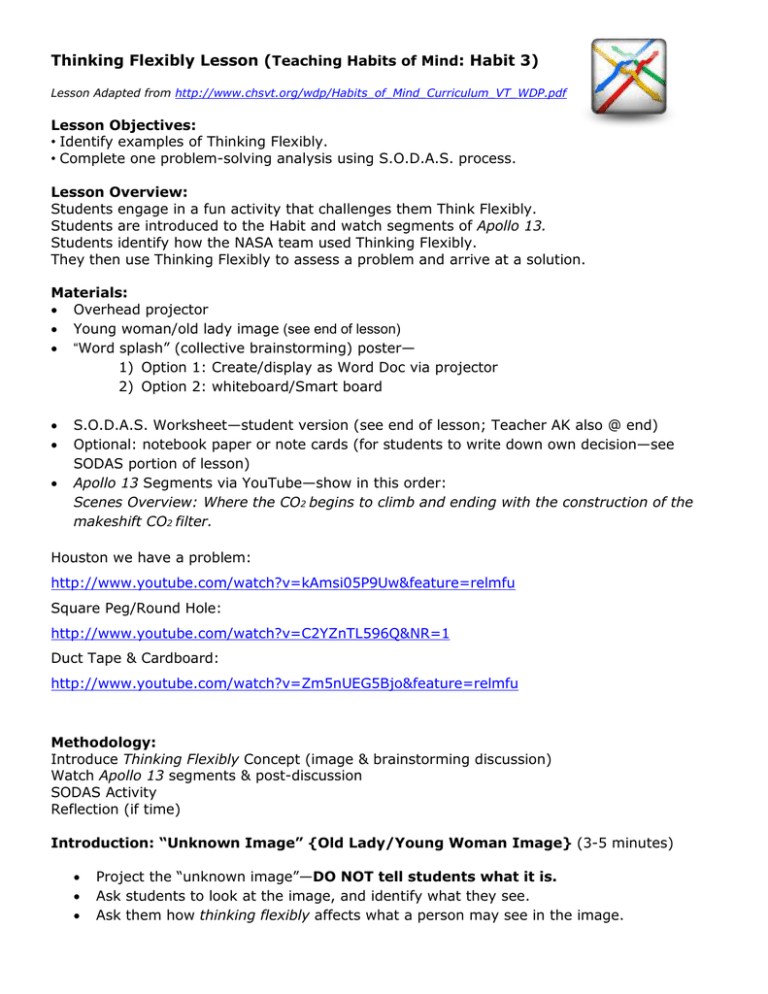
Thinking Flexibly Lesson (Teaching Habits of Mind: Habit 3)
Lesson Adapted from http://www.chsvt.org/wdp/Habits_of_Mind_Curriculum_VT_WDP.pdf
Lesson Objectives:
• Identify examples of Thinking Flexibly.
• Complete one problem-solving analysis using S.O.D.A.S. process.
Lesson Overview:
Students engage in a fun activity that challenges them Think Flexibly.
Students are introduced to the Habit and watch segments of Apollo 13.
Students identify how the NASA team used Thinking Flexibly.
They then use Thinking Flexibly to assess a problem and arrive at a solution.
Materials:
Overhead projector
Young woman/old lady image (see end of lesson)
“Word splash” (collective brainstorming) poster—
1) Option 1: Create/display as Word Doc via projector
2) Option 2: whiteboard/Smart board
S.O.D.A.S. Worksheet—student version (see end of lesson; Teacher AK also @ end)
Optional: notebook paper or note cards (for students to write down own decision—see
SODAS portion of lesson)
Apollo 13 Segments via YouTube—show in this order:
Scenes Overview: Where the CO2 begins to climb and ending with the construction of the
makeshift CO2 filter.
Houston we have a problem:
http://www.youtube.com/watch?v=kAmsi05P9Uw&feature=relmfu
Square Peg/Round Hole:
http://www.youtube.com/watch?v=C2YZnTL596Q&NR=1
Duct Tape & Cardboard:
http://www.youtube.com/watch?v=Zm5nUEG5Bjo&feature=relmfu
Methodology:
Introduce Thinking Flexibly Concept (image & brainstorming discussion)
Watch Apollo 13 segments & post-discussion
SODAS Activity
Reflection (if time)
Introduction: “Unknown Image” {Old Lady/Young Woman Image} (3-5 minutes)
Project the “unknown image”—DO NOT tell students what it is.
Ask students to look at the image, and identify what they see.
Ask them how thinking flexibly affects what a person may see in the image.
Guided Group Brainstorm/Discussion (5-10 minutes)
Tell the class that today’s activity centers around thinking flexibly.
Ask the class to describe what they think ‘Thinking Flexibly’ means, and have them give
some examples to explain their ideas.
Write their ideas and working definition on the word splash poster.
(See Materials section above for options)
Some questions to pose to get them talking:
Do you know anyone who is a flexible thinker?
What does a flexible thinker act like?
How does this person meet challenges?
Explain that Thinking Flexibly Requires:
Altering our perspective and seeing things from another’s point of view
Seeing the big picture
Seeing the details
Starting at the end point and working backward
During this brainstorming discussion, lead them to see that flexible thinkers…
Change their minds as they get new information
Use different ways to solve problems
Move between looking at the big picture and paying attention to details
Use new approaches from different angles (lateral thinking)
Think from alternate points of view at the same time
Work within rules and guidelines and predict the results of flouting them
Take a bird’s-eye view and find themes and patterns
Apollo 13 Segments (15-20 minutes)
Before watching the segments, ask students to watch for flexible thinking behavior.
Watch segments of Apollo 13 from the discovery of the air-filter problem to the
production of the filter.
Ask them to name examples of Thinking Flexibly after watching the scenes—
o
Have them refer to the brainstormed word splash poster if needed.
Summarize key points by elaborating on the students’ observations of Thinking Flexibly
o
Make connections between their examples from the movie and their ideas from
the word splash.
Ask if they want to add any words to the word splash, based on what they saw in the
movie segments.
SODAS Activity & Discussion (10-15 minutes)
Ask students to think about and/or write down a decision they made during the week
(or since the beginning of school) that was difficult for them (Use own paper or note cards).
Before/without having them share their decisions, ask them to think about:
Did they have enough time to think it out?
Did they have enough information to make a good choice?
What is a good choice?
Explain how we sometimes make decisions daily that we are almost unaware of:
What we’re going to eat for breakfast, how we get to where we are going, what to wear…other
examples from your own life…
Choose & present one of the following questions to the class (or come up with another
example relevant for your AIM/ACHIEVE class, based on what you know about them).
Demonstrate the SODAS decision-making process by writing out the decision-making
steps and factors on the whiteboard/via MS Word on the projector:
Introduce S.O.D.A.S.
Situation
Options
Disadvantages
Advantages
Solution
Should I do my homework right when I get home, or should I wait
until later?
Should I go for tutoring in the subject I am having trouble with, or
should I wait until progress report time to see where my grade is?
Should I go back to my locker before the bell rings to get my
assignment, and be tardy, or should I go to class and tell the
teacher it’s in my locker?
Distribute the S.O.D.A.S. student handout to students.
Have students apply S.O.D.A.S. model to the one on the sheet:
o They can work in pairs or small groups—but have all members complete own sheet.
o Allow students time to work through solutions as a group.
Facilitate class discussion of the process and the results they came up with; use the
Teacher Answer Key if needed to generate examples for each step.
Closure:
Challenge students to try using Thinking Flexibly this week, and write about it in their
notebook/journal/agenda to share with the class later this week/next week.
Tell them:
If you notice someone who demonstrates Thinking Flexibly, jot down your observation in your
notebook or agenda, and be prepared to share with your AIM/ACHIEVE class.
Reflection (3-5 minutes): If time, have students write out or share their ideas orally to the
following question:
In what situations are you most likely to try out Thinking Flexibly?
S.O.D.A.S. Worksheet – Teacher Answer Key
Bill has been asked to work this Friday with a construction crew that he has
worked with in the past. Because he knows the job and likes the people he
would be working with, he said yes. On Friday afternoons, Bill usually goes
to an Adult Education class, where he is working towards getting his G.E.D.
The previous week, Bill skipped class to go on the same job site.
Bill’s teacher has told him he needs to keep his class appointments.
What should Bill do?
1. SITUATION: Define the problem or situation (S).
S=Bill has to be in class at the same time he said he would go
to work.
2. OPTIONS: What are Bill’s choices or options (O)?
O=
a) Bill can go to class and miss work, or
b) Bill can go to work and skip class, or
c) Bill can talk to his teacher about re-scheduling.
S.O.D.A.S.
Decision-Making Method:
Situation
Options
Disadvantages
Advantages
Solution
3. What are the DISADVANTAGES (D) and ADVANTAGES (A) of each option?
D=Disadvantages
a) Bill’s work site supervisor will be disappointed and upset if he doesn’t come to work.
b) Bill’s teacher may kick him out of class if he skips again.
c) No obvious disadvantage.
A=Advantages
a) Bill makes progress towards his G.E.D.
b) Bill keeps his work site supervisor happy.
c) Bill, his work site supervisor, and his teacher are all happy (if he is able to reschedule his
class).
4. Select the best option or solution (S).
S=Option c.
Everyone is happy.
S.O.D.A.S. Worksheet – Student
Name: ____________________
Bill has been asked to work this Friday with a construction crew that he has
worked with in the past. Because he knows the job and likes the people he
would be working with, he said yes. On Friday afternoons, Bill usually goes
to an Adult Education class, where he is working towards getting his G.E.D.
The previous week, Bill skipped class to go on the same job site.
Bill’s teacher has told him he needs to keep his class appointments.
What should Bill do?
1. SITUATION: Define the problem or situation (S).
S=
2. OPTIONS: What are Bill’s choices or options (O)?
S.O.D.A.S.
Decision-Making Method:
Situation
Options
Disadvantages
Advantages
Solution
Options:
a)
b)
c)
3. What are the DISADVANTAGES (D) and ADVANTAGES (A) of each option?
D=Disadvantages:
a)
b)
c)
A=Advantages:
a)
b)
c)
4. Select the best option or SOLUTION (S).
S=

